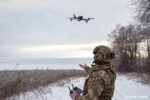South Korea’s aerospace ambitions are accelerating as Korean Aerospace Industries (KAI) partners with U.S.-based Kratos Defense & Security Solutions to co-develop advanced manned-unmanned teaming (MUM-T) capabilities. The collaboration aims to integrate artificial intelligence (AI)-enabled unmanned combat aerial vehicles (UCAVs) with platforms like the FA-50 light fighter and the upcoming KF-21 Boramae multirole fighter. This strategic move positions South Korea at the forefront of next-generation airpower concepts in the Indo-Pacific.
Strategic Alignment Between KAI and Kratos
The memorandum of understanding (MoU), signed in October 2025 during Seoul ADEX, formalizes a partnership between two key players in their respective domains. KAI brings its deep experience in indigenous aircraft development—most notably the T-50/FA-50 series and the KF-21 Boramae—while Kratos contributes its cutting-edge unmanned systems portfolio including the XQ-58A Valkyrie loyal wingman platform.
The partnership focuses on developing a scalable MUM-T architecture that leverages AI for autonomous mission execution. According to statements from both companies at ADEX 2025, initial efforts will center on integrating Kratos’ autonomous flight technologies with KAI’s manned platforms to enable loyal wingman functions such as sensor extension, electronic warfare support, or decoy operations.
MUM-T Concept Gains Momentum in Indo-Pacific Doctrine
MUM-T is increasingly seen as a force multiplier across modern air forces by enabling a single piloted aircraft to command multiple autonomous or semi-autonomous drones. These UCAVs can perform high-risk missions—such as suppression of enemy air defenses (SEAD), ISR penetration into contested zones, or electronic attack—without endangering pilots.
For South Korea specifically, this capability aligns with its doctrinal shift toward distributed lethality and survivability amid growing regional threats from North Korean missile forces and Chinese airpower expansion. The integration of AI-enabled UCAVs with frontline fighters like the FA-50 or KF-21 could significantly enhance operational flexibility while reducing attrition rates in high-threat environments.
Notably, KAI has previously indicated interest in developing a domestic loyal wingman drone under its “Next Generation Unmanned System” initiative. The collaboration with Kratos accelerates this roadmap by incorporating proven U.S. technologies into a Korean-led ecosystem.
Technology Integration: From Valkyrie to Boramae
Kratos’ XQ-58A Valkyrie is one of the most mature loyal wingman platforms globally. Designed under the U.S. Air Force Research Laboratory’s Low-Cost Attritable Aircraft Technology (LCAAT) program, it features high subsonic speeds (~Mach 0.85), over 4,000 km range depending on payload configuration, modular payload bays for ISR or kinetic munitions, and semi-autonomous operation via datalinked control from manned aircraft or ground stations.
KAI’s FA-50 is already exported widely across Asia and Europe; integrating it with an AI-enabled drone would boost its competitiveness as a low-cost force multiplier package for allied nations. Meanwhile, the KF-21 Boramae—a twin-engine multirole fighter currently undergoing flight testing—is expected to be fully compatible with network-centric operations including Link-K/KDL datalinks and AESA radar integration.
The roadmap likely includes:
- Developing secure datalink protocols between manned fighters and UCAVs
- Integrating mission management software for real-time tasking
- Testing swarming behavior under human-on-the-loop supervision
- Hardening against EW/cyber interference via resilient C2 architectures
These steps mirror NATO-aligned efforts such as Australia’s MQ-28 Ghost Bat program or USAF’s Collaborative Combat Aircraft (CCA) initiative under NGAD.
Aerospace Industrial Implications for South Korea
This partnership marks a significant milestone for South Korea’s defense industrial base. By co-developing rather than importing complete systems from abroad, Seoul enhances its sovereign capabilities while accessing proven Western technologies through industrial cooperation rather than offsets alone.
KAI has been increasingly positioning itself not just as an OEM but as an integrator of complex aerospace ecosystems—including avionics suites developed jointly with Hanwha Systems and radar packages from LIG Nex1. Adding autonomous systems development further expands its portfolio into one of the most critical domains shaping future warfare.
The collaboration also opens potential export pathways: several countries operating FA-50 fleets—including Poland, Philippines, Malaysia—may seek affordable MUM-T packages without waiting for fifth-gen fighter deliveries. A modular UCAV companion system tailored to these users could expand market share significantly across emerging economies seeking cost-effective deterrence options.
Challenges Ahead: Interoperability and Autonomy Assurance
Despite promising synergies between KAI’s platforms and Kratos’ drone tech stack, several challenges remain:
- C4ISR interoperability: Ensuring seamless communication across national protocols like Link-K versus NATO-standard Link-16 will require middleware solutions or dual-mode terminals.
- Spectrum management: Operating multiple drones per fighter requires robust frequency deconfliction strategies to avoid jamming or fratricide risks during saturation ops.
- Autonomy assurance: Validating AI decision-making under dynamic threat environments remains an open problem; human-in-the-loop vs human-on-the-loop tradeoffs must be carefully managed under ROE constraints.
- Sustainment logistics: Fielding attritable drones at scale demands new approaches to maintenance cycles and parts supply chains distinct from traditional manned aircraft models.
If these hurdles can be addressed through iterative prototyping—as seen in recent USAF Skyborg experiments—the payoff could redefine how mid-tier powers project air dominance without relying solely on expensive stealth fleets.
A Future-Oriented Vision for Allied Airpower Integration
KAI-Kratos cooperation reflects broader trends toward coalition-based innovation in military aerospace technology. As geopolitical tensions rise across East Asia—from Taiwan Strait flashpoints to North Korean ICBM tests—interoperable force structures become essential not just within national militaries but across allied coalitions like ROK-US-Japan trilateral frameworks.
If successful demonstrations emerge within this decade—particularly involving integrated live-fly trials between KF-21s controlling Valkyrie-class drones—it may catalyze joint procurement programs or shared R&D funding pools among Indo-Pacific allies seeking credible deterrence without duplicating entire NGAD-level programs independently.
This partnership thus represents more than just bilateral industrial cooperation—it signals a strategic shift toward agile airpower architectures where autonomy augments human decision-making at scale across contested domains.









